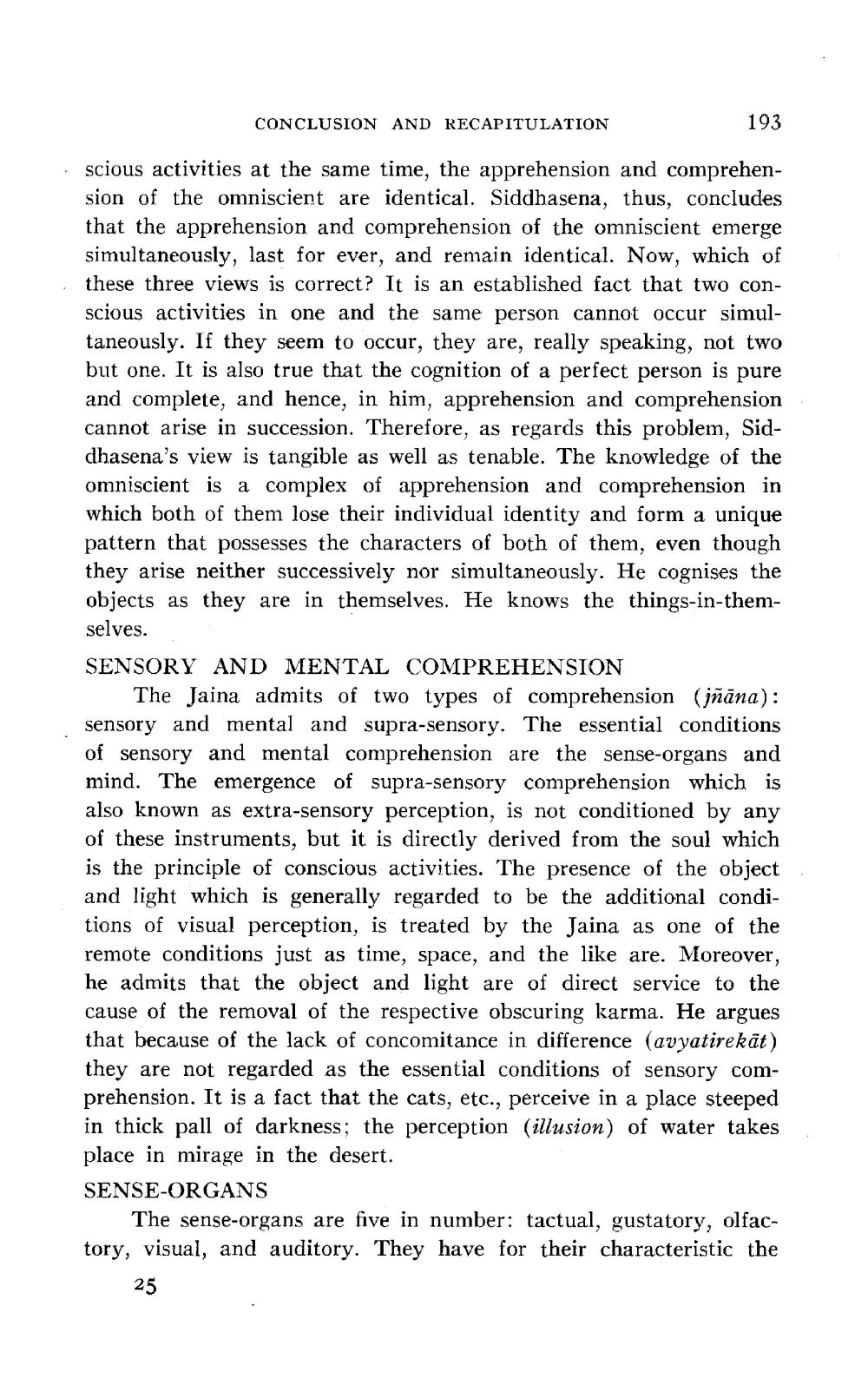________________
CONCLUSION AND RECAPITULATION
193
scious activities at the same time, the apprehension and comprehension of the omniscient are identical. Siddhasena, thus, concludes that the apprehension and comprehension of the omniscient emerge simultaneously, last for ever, and remain identical. Now, which of these three views is correct? It is an established fact that two conscious activities in one and the same person cannot occur simultaneously. If they seem to occur, they are, really speaking, not two but one. It is also true that the cognition of a perfect person is pure and complete, and hence, in him, apprehension and comprehension cannot arise in succession. Therefore, as regards this problem, Siddhasena's view is tangible as well as tenable. The knowledge of the omniscient is a complex of apprehension and comprehension in which both of them lose their individual identity and form a unique pattern that possesses the characters of both of them, even though they arise neither successively nor simultaneously. He cognises the objects as they are in themselves. He knows the things-in-themselves.
SENSORY AND MENTAL COMPREHENSION
The Jaina admits of two types of comprehension (jñāna): sensory and mental and supra-sensory. The essential conditions of sensory and mental comprehension are the sense-organs and mind. The emergence of supra-sensory comprehension which is also known as extra-sensory perception, is not conditioned by any of these instruments, but it is directly derived from the soul which is the principle of conscious activities. The presence of the object and light which is generally regarded to be the additional conditions of visual perception, is treated by the Jaina as one of the remote conditions just as time, space, and the like are. Moreover, he admits that the object and light are of direct service to the cause of the removal of the respective obscuring karma. He argues that because of the lack of concomitance in difference (avyatirekat) they are not regarded as the essential conditions of sensory comprehension. It is a fact that the cats, etc., perceive in a place steeped in thick pall of darkness; the perception (illusion) of water takes place in mirage in the desert.
SENSE-ORGANS
The sense-organs are five in number: tactual, gustatory, olfactory, visual, and auditory. They have for their characteristic the
25




